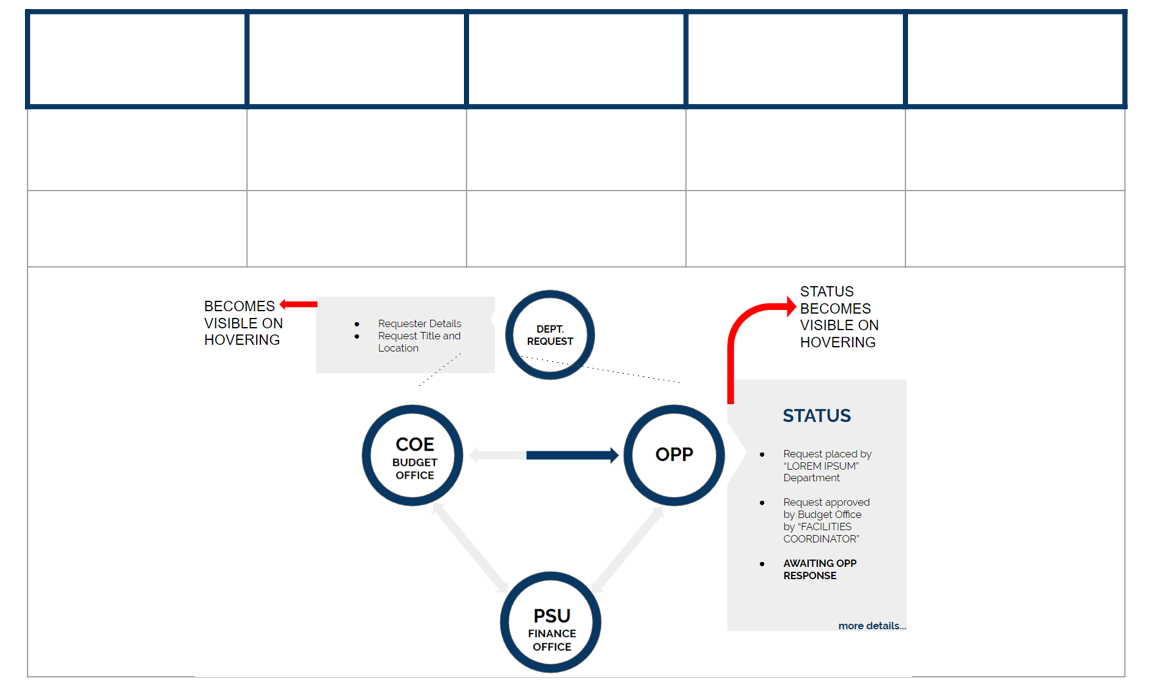Leo is a financial commitment tracking and monitoring system designed for the College of Engineering (CoE) at Penn State. Designed to assist in migration from the outdated accounting software used by the college to the new ERP system, Leo was designed to act as an intermediary system that streamlined and integrated the recording of physical infrastructure finances that were omitted in the older system.
As of January 2020, the College of Engineering at Penn State was set to invest $350 million in the infrastructural facilities and building renovations. The traditionally used financial system ‘IBIS’ did not have the capability to track and manage future financial commitments. To mitigate this gap, the college used a self-designed database to track finances. But despite the enormity of the transactions that facilities projects represented, there did not exist a consolidated system that could track the facilities project financial commitments. Moreover, the university was set to revamp their entire financial system with a new age ERP system capable of handling transactions that IBIS couldn’t.
Leo was a team project undertaken during an interaction design course designed to smoothen this transition while providing a robust mode to track the facilities project financial commitments until the new system is properly put in place.




To get a better understanding of the problem, we conducted interviews with 5 key stakeholders who interacted with the system on a regular basis. These were semi-structured interviews and helped us gauge the exact needs and workarounds that the users employed for the current problems they were facing with the database. These interviews were audio recorded, transcribed using Google Cloud and then qualitatively analyzed using NVivo.


The design process for an interface that deals with the issues observed through the qualitative analysis was majorly split into two stages. For the first stage, we created a low fidelity prototype that laid out the general wireframe of components and features that were determined to be important. These ideas were then shared among the class with a brief discussion of the problems we were trying to solve.




These ideas were then developed and a high fidelity 'Wizard of Oz' prototype was developed using Adobe XD.



The high fidelity prototype was then tested for usability through 3 key metrics - Effectiveness, Satisfaction and Efficiency. Usability testing was done via recruiting 12 participants coming from a wide variety of fields. These participants were given 4 different tasks to complete and their performance was recorded. We couldn't take help of actual users to participate in the study due to the COVID-19 restriction norms that were in place during the time of study.

Though Leo was received enthusiastically by COE and our pilot usability test gave us favorable results, owing to COVID-19 restrictions, we couldn't perform a usability test with real stakeholders. Having insights from the real users can always help a product get better and that's a good direction to take Leo in moving forward. Also, since Leo was created during a course, limited time meant that we couldn't create a mobile app for Leo. Given the pervasiveness of mobile devices in our day-to-day lives, creating a mobile app for this might be a good next step.